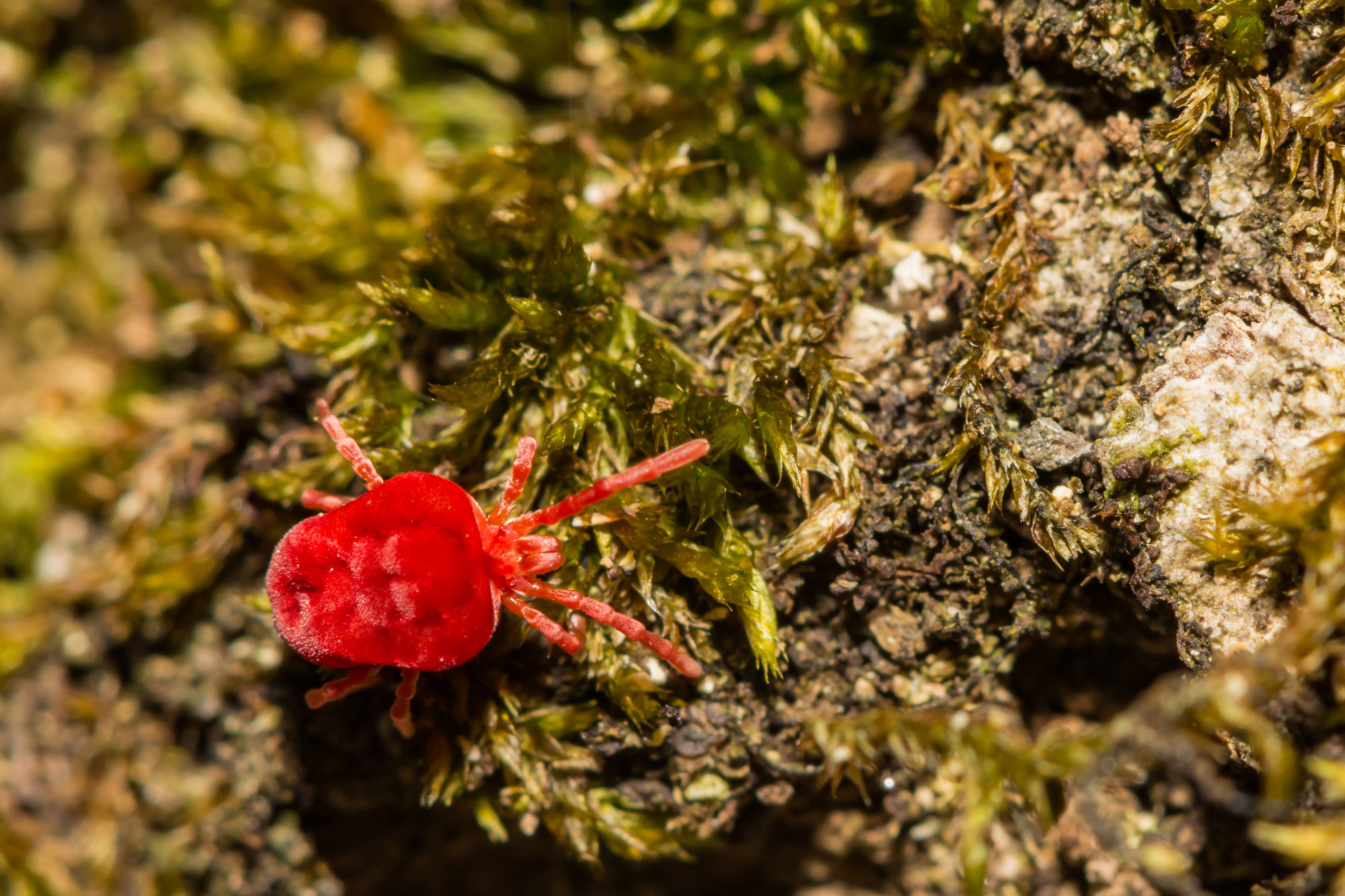Things we love: Those teeny, tiny microarthropods

About this series: While many people love nature, different people love different aspects of it. One may have a soft spot for flowers, while another gravitates toward a particular animal. And yet for others, it's all about the scenery. "Things We Love" explores those jaw-dropping parts of nature that one person finds particularly special. In this edition, Angie Opiola, an interpretive naturalist at Plum Creek Nature Center, tells us why she loves microarthropods.
Have you ever been lounging in the grass reading a book and noticed that the period on your page begins to move? Or wondered what those little red dots are cruising around on the sunny side of a concrete wall? Maybe while gardening you noticed some bouncy springing action coming from the soil? Well, I welcome you to the wonderful world of microarthropods, which is just a fancy way of saying small bugs.
The majority of these mobile dots are collembola (spring tails) and oribatid mites, but there’s also the behemoth giant red velvet mite that I’m sure many of you are aware of. Microarthropods are incredibly diverse and responsible for a multitude of benefits, not to mention they are possibly the best indicators of soil quality, all while being unbelievably adorable.
A good chunk of my life has been dedicated to the study of these little guys — their spatial arrangement, responses to various habitat types, how exotic invasive species affect them, etc. — and let me tell you, they have a tendency to grow on you (figuratively, of course). After spending years of my life under a microscope, I’ve come to realize a few things. We do not give enough credit to these important little dots. Studying these minute critters and learning about the significant role they play to our very own existence aids in serving up a big helping of humble pie.
Soil organic matter (SOM) is important to a healthy ecosystem, and it just so happens that microarthropods eat SOM for breakfast and — better yet — poop a higher-quality SOM. Lucky us! The little guys are also decomposer machines. Their normal activity of moving, mixing and eating helps in the process of decomposition. The bacteria and fungus eaters stimulate microbial activity. The predatory dots (like the giant red velvet mite) keep populations in check while some other dots are distributing nutrients, along with microbes, throughout the soil. These mighty periods are able to take nutrients in the soil and make them readily available for plant use.
Given their vast numbers in both species diversity and abundance, they are a mighty presence in food web stability. It is said that in 1 square yard of soil there can be hundreds of thousands of these little critters, all contained in about the top 3 inches of soil. So you can understand how susceptible they could be to weed or pest control, including the use of insecticides or herbicides. This in turn significantly effects soil productivity.
The next time you come across a moving dot, give those little guys a big green thumbs up, because if it wasn’t for them and their actions, we’d be 6 feet under!
